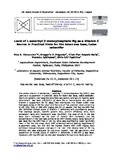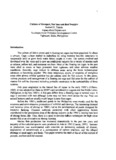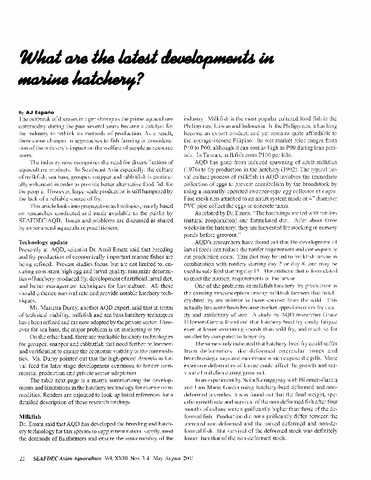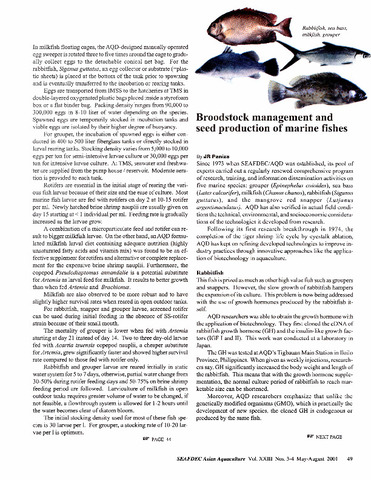Level of L-ascorbyl-2-monophosphate-Mg as a vitamin C source in practical diets for the Asian sea bass, Lates calcarifer

Associated URL
evols.library.manoa.hawaii.eduDate
2012Author
Page views
261Metadata
Show full item recordShare
Abstract
The stable vitamin C derivative, L-ascorbyl-2-monophosphate-Mg (AMP), was used as a supplement in practical diets for Asian sea bass, Lates calcarifer. Optimum growth, liver ascorbic acid (AA) saturation, and wound healing were determined. Sea bass (78.9±0.4 g) were fed a maintenance diet without vitamin C supplement for 25 days, then distributed into fifteen 1500-l oval fiberglass tanks at 30 fish each and fed one of five practical diets containing 0, 50, 100, 200, or 400 AMP mg/kg diet for 14 weeks. Fish fed the AMP-free diet exhibited clinical signs of vitamin C deficiency and significantly poorer final average weight, specific growth rate, protein efficiency ratio, feed conversion ratio, and hematocrit level (p<0.05). The level of AA in the sea bass brain increased as the level of dietary AMP increased. The AA concentration in the liver was similar at all AMP dietary levels. Body calcium of sea bass fed the AMP-free or 50 mg diets was significantly lower (p<0.05) than in fish fed the other diets. AMP enhanced wound healing regardless of supplement level, but fish fed the highest dietary AMP (400 mg/kg diet) exhibited histopathological changes in the liver. The dietary level of 50 mg AMP/kg diet was adequate for optimum growth, liver AA saturation, and prevention of clinical signs of vitamin C deficiency in 80-220 g sea bass. However, 100 mg AMP per kg diet was necessary for optimum body calcium.
Suggested Citation
Catacutan, M. R., Pagador, G. E., Doyola-Solis, E. F., Ishikawa, M., & Teshima, S.-i. (2012). Level of L-ascorbyl-2-monophosphate-Mg as a vitamin C source in practical diets for the Asian sea bass, Lates calcarifer. The Israeli Journal of Aquaculture-Bamidgeh , 64(IIC:64.2012.782), 7 pp.. http://hdl.handle.net/10862/2174
Subject
Taxonomic term
Collections
- AQD Journal Articles [1248]
Related items
Showing items related by title, author, creator and subject.
-
Culture of grouper, sea bass and red snapper
Toledo, Joebert D. (University of the Philippines Aquaculture Society, Inc., 2001)Marine fish production has increased dramatically in the past ten years and majority of the cultured species were produced in Asia in 1992. Increase in production was accompanied with concerns on increasing outbreak of ... -
What are the latest developments in marine hatchery?
Españo, A. J. (Aquaculture Department, Southeast Asian Fisheries Development Center, 2001) -
Broodstock management and seed production of marine fishes
Paniza, J. R. (Aquaculture Department, Southeast Asian Fisheries Development Center, 2001)



